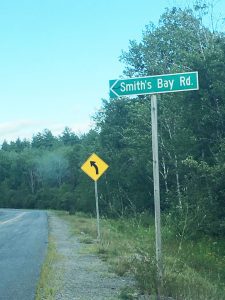
I escaped to a remote Ontario lake for some R&R last week. And as a guest at a wilderness property, I tuned in to what Ontarians at their cottages on holiday have on their minds. I figured they’d probably be talking about how many days it’s rained or encounters with bears at garbage dumps or the cost of gas just to get there and back. One night my hosts invited over a couple of their friends and I learned just what is top-of-mind in cottage country.
“You know the Smith’s Bay Road sign on the main highway’s been gone quite a while,” their woman guest said. “That means fire crews won’t know where to find us.”
A few seconds of silence followed as her timely concern sank in.
“I think we ought to get the ministry (of natural resources) to replace that sign quickly,” she added.
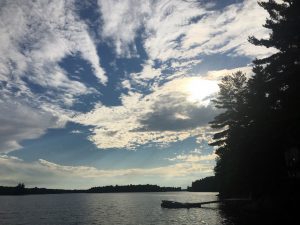
When I was a kid, my folks owned a cottage on the west side of Lake Simcoe, north of Toronto, for a few years. But the lot was situated so close to main thoroughfares that nobody along our lakeshore road ever considered that a major fire could threaten our lives, nor that we’d ever have to face a blaze without professional assistance.
But cottage life has changed during the intervening 50 years. Today most cottagers escaping the Greater Toronto Area each summer have fled farther from main thoroughfares and built their cottages in more remote locations – in dense wilderness and hours from the nearest fire hall.
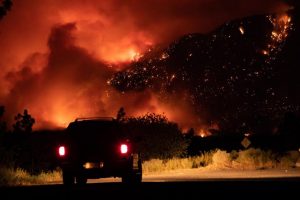
I think the truth is with the effects of climate change more tangible and even in communities such as ours, Uxbridge, Ont., with a 24/7 volunteer firefighting force, people still should take the threat of “interface fire” more seriously. The most recent interface fire (where houses located next to forested or grassland areas also fuel the fire) took place last year at Lytton Creek, in B.C.; it killed two residents and destroyed 90 per cent of the town of Lytton.
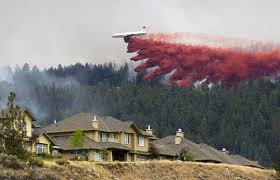
But the classic interface fire took place in Kelowna, B.C., in 2003. It began in a nearby provincial park, quickly advanced toward the city, forced the evacuation of 27,000 residents, drew personnel from 60 fire departments and destroyed 239 buildings (many of them private homes) and caused $33.8 million in damage.
A post-mortem of the Kelowna blaze initiated a sea change in the prevention of interface fires in Canada. And its recommendations – even nearly 20 years later – should motivate citizens in every community to make changes that could improve the chances of survival.
First and foremost, the report told residents to move firewood or other flammable materials at least 10 metres from structures. (If I’ve seen one Uxbridge home with cordwood piled against an outside wall, I’ve seen 50 of them.)
Next, it recommended thinning brush or pruning lower branches of trees within 30 metres of houses. And it told homeowners to clear gutters of leaves where hot embers could spread to a roof. Finally, the survey recommended disposal of deadfall – logs, needles, twigs, dead grass and shrubs – that would encourage a fire to spread along the ground.
For firefighters these are all obvious precautions. For the rest of us, it’s time to consider such preventive measures, even if we aren’t located at a remote shoreline in Ontario cottage country.
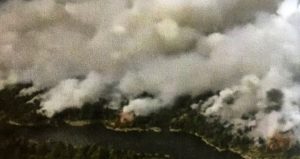
The other night at my friends’ wilderness cottage, concern about the lack of the Smith’s Bay Road sign quickly evolved to remembrances of the Parry Sound 33 Forest Fire four years ago. Apparently, a disabled ATV sparked the fire in mid-July 2018. Winds quickly catapulted the flames westward, enough to threaten their cottages along Dollars Lake.
“During the night (July 22), the wind blew in our direction and the bunkie filled with smoke,” one cottager recalled in the recently published Memories of Smith’s Bay 50th anniversary book. “My husband woke up coughing black mucus … and he coughed up black smoke particles for weeks after.”
Nearly 800 firefighters from U.S., Canada and Mexico arrived to fight the Parry Sound 33 fire and officially extinguished it by Oct. 31, but not before it had consumed more than 28,000 acres of forest north of Parry Sound, within kilometres of where I was sitting the other night.
I learned the next day that my host has already begun a proactive plan at his wilderness property. He has marked trees and brush close to his cottage with pink plastic tape for trimming and removal.
“We probably can’t prevent the cottage from burning,” he said, “but we can at least slow a fire down. And give ourselves time.”
I hope these wildfires don’t come near my home. Recently, there have been a lot of these wildfires, and I think it would be great if the authorities tried to investigate this issue properly.
An escape to a remote Ontario lake is something that I need. It’s precisely the thing that I am currently looking for.
Are wildfires as close as your backdoor? I have a phobia regarding fires and whatnot; hence, having wildfires so close is something that I find pretty scary.